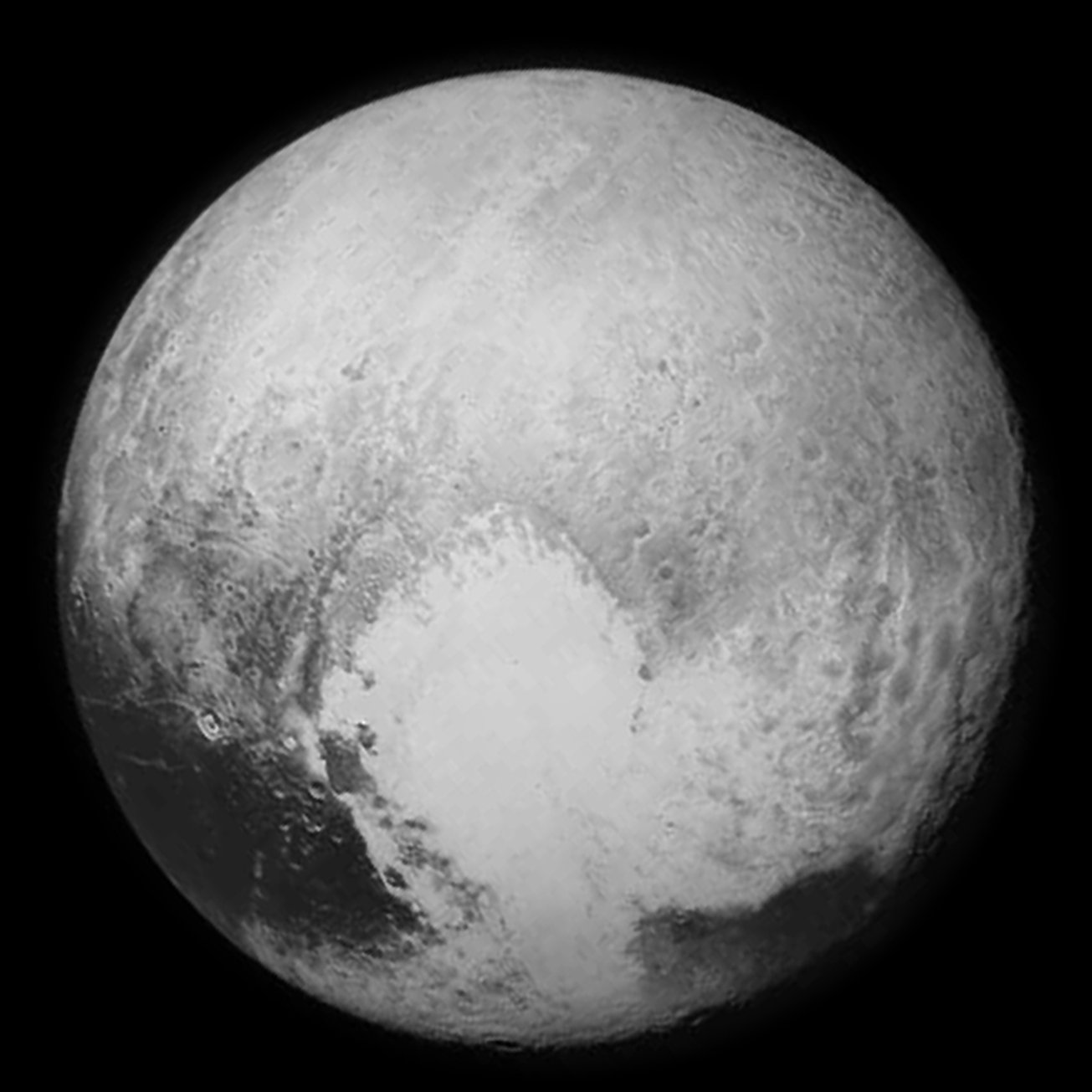|
Ralph (New Horizons)
Ralph is a science instrument aboard the robotic ''New Horizons'' spacecraft, which was launched in 2006. Ralph is a visible and infrared imager and spectrometer to provide maps of relevant astronomical targets based on data from that hardware. Ralph has two major subinstruments, LEISA and MVIC. MVIC stands for ''Multispectral Visible Imaging Camera'' and is a color imaging device, while LEISA originally stood for ''Linear Etalon Imaging Spectral Array'' and is an infrared imaging spectrometer for spaceflight. LEISA observes 250 discrete wavelengths of infrared light from 1.25 to 2.5 micrometers. MVIC is a pushbroom scanner type of design with seven channels, including red, blue, near-infrared (NIR), and methane. Overview Ralph is one of seven major instruments aboard ''New Horizons'' which was launched in 2006 and flew by the dwarf planet Pluto in 2015. At Pluto, Ralph enables the observation of many aspects including: *geology of Pluto *form *structure *surface composition *su ... [...More Info...] [...Related Items...] OR: [Wikipedia] [Google] [Baidu] |
Jupiter Trojan
The Jupiter trojans, commonly called trojan asteroids or simply trojans, are a large group of asteroids that share the planet Jupiter's orbit around the Sun. Relative to Jupiter, each trojan librates around one of Jupiter's stable Lagrange points: either ', existing 60° ahead of the planet in its orbit, or ', 60° behind. Jupiter trojans are distributed in two elongated, curved regions around these Lagrangian points with an average semi-major axis of about 5.2 AU. The first Jupiter trojan discovered, 588 Achilles, was spotted in 1906 by German astronomer Max Wolf. More than 9,800 Jupiter trojans have been found . By convention, they are each named from Greek mythology after a figure of the Trojan War, hence the name "trojan". The total number of Jupiter trojans larger than 1 km in diameter is believed to be about , approximately equal to the number of asteroids larger than 1 km in the asteroid belt. Like main-belt asteroids, Jupiter trojans form families. , man ... [...More Info...] [...Related Items...] OR: [Wikipedia] [Google] [Baidu] |
Three-mirror Anastigmat
A three-mirror anastigmat is an anastigmat telescope built with three curved mirrors, enabling it to minimize all three main optical aberrations – spherical aberration, coma, and astigmatism. This is primarily used to enable wide fields of view, much larger than possible with telescopes with just one or two curved surfaces. A telescope with only one curved mirror, such as a Newtonian telescope, will always have aberrations. If the mirror is spherical, it will suffer from spherical aberration. If the mirror is made parabolic, to correct the spherical aberration, then it must necessarily suffer from coma and off-axis astigmatism. With two curved mirrors, such as the Ritchey–Chrétien telescope, coma can be minimized as well. This allows a larger useful field of view, and the remaining astigmatism is symmetrical around the distorted objects, allowing astrometry across the wide field of view. However, the astigmatism can be reduced by including a third curved optical element. Whe ... [...More Info...] [...Related Items...] OR: [Wikipedia] [Google] [Baidu] |
Off-axis Optical System
An off-axis optical system is an optical system in which the optical axis of the aperture is not coincident with the mechanical center of the aperture. The principal applications of off-axis optical systems are to avoid obstruction of the primary aperture by secondary optical elements, instrument packages, or sensors, and to provide ready access to instrument packages or sensors at the focus. The engineering tradeoff of an off-axis optical system is an increase in image aberrations. There are various theoretical models for aberration in off-axis optical systems. This involves various techniques including different types of equations for ray-tracing, and a goal can be optimizing the design. An example of an off-axis optical system is a three mirror design as optics for a hyperspectral imager. See also *Off-axis reflecting telescope A reflecting telescope (also called a reflector) is a telescope that uses a single or a combination of curved mirrors that reflect light and form an ... [...More Info...] [...Related Items...] OR: [Wikipedia] [Google] [Baidu] |
First Color Image Of Ultima Thule (MVIC Crop)
First or 1st is the ordinal form of the number one (#1). First or 1st may also refer to: *World record, specifically the first instance of a particular achievement Arts and media Music * 1$T, American rapper, singer-songwriter, DJ, and record producer Albums * ''1st'' (album), a 1983 album by Streets * ''1st'' (Rasmus EP), a 1995 EP by The Rasmus, frequently identified as a single * '' 1ST'', a 2021 album by SixTones * ''First'' (Baroness EP), an EP by Baroness * ''First'' (Ferlyn G EP), an EP by Ferlyn G * ''First'' (David Gates album), an album by David Gates * ''First'' (O'Bryan album), an album by O'Bryan * ''First'' (Raymond Lam album), an album by Raymond Lam * ''First'', an album by Denise Ho Songs * "First" (Cold War Kids song), a song by Cold War Kids * "First" (Lindsay Lohan song), a song by Lindsay Lohan * "First", a song by Everglow from ''Last Melody'' * "First", a song by Lauren Daigle * "First", a song by Niki & Gabi * "First", a song by Jonas Broth ... [...More Info...] [...Related Items...] OR: [Wikipedia] [Google] [Baidu] |
Titan (moon)
Titan is the largest moon of Saturn and the second-largest natural satellite in the Solar System. It is the only moon known to have a dense atmosphere, and is the only known object in space other than Earth on which clear evidence of stable bodies of surface liquid has been found. Titan is one of the seven gravitationally rounded moons in orbit around Saturn, and the second most distant from Saturn of those seven. Frequently described as a planet-like moon, Titan is 50% larger (in diameter) than Earth's Moon and 80% more massive. It is the second-largest moon in the Solar System after Jupiter's moon Ganymede, and is larger than the planet Mercury, but only 40% as massive. Discovered in 1655 by the Dutch astronomer Christiaan Huygens, Titan was the first known moon of Saturn, and the sixth known planetary satellite (after Earth's moon and the four Galilean moons of Jupiter). Titan orbits Saturn at 20 Saturn radii. From Titan's surface, Saturn subtends an arc of 5.09 ... [...More Info...] [...Related Items...] OR: [Wikipedia] [Google] [Baidu] |
Long Range Reconnaissance Imager
Long Range Reconnaissance Imager (LORRI) is a telescope aboard the ''New Horizons'' spacecraft for imaging. LORRI has been used to image Jupiter, its moons, Pluto and its moons, and Arrokoth since its launch in 2006. LORRI is a reflecting telescope of Ritchey-Chrétien design, and it has a main mirror diameter of 208 mm (8.2 inches) across. LORRI has a narrow field of view, less than a third of a degree. Images are taken with a CCD capturing data with 1024 × 1024 pixels. LORRI is a telescopic panchromatic camera integrated with the ''New Horizons'' spacecraft, and it is one of seven major science instruments on the probe. LORRI does not have any moving parts and is pointed by moving the entire ''New Horizons'' spacecraft. Operations LORRI was used to calculate albedos for Pluto and Charon. LORRI is also used for navigation, especially to more precisely determine the location of a flyby target. In 2018, ''New Horizons'' spacecraft used navigation data from LORRI for its p ... [...More Info...] [...Related Items...] OR: [Wikipedia] [Google] [Baidu] |
Lisa Hardaway
Lisa Hardaway (1966–2017) was an American aerospace engineer and program manager for an instrument on the New Horizons spacecraft to Pluto and Beyond. Among her awards, she was named Engineer of the Year for 2015–2016 by the Colorado American Institute of Aeronautics and Astronautics. Life Hardaway graduated from Massachusetts Institute of Technology, Stanford University, and University of Colorado. She worked for Ball Aerospace. She was program manager for RALPH, on the ''New Horizons'' mission. She is survived by her husband, James, and two children. In the summer of 2017, NASA renamed the LEISA spectrometer on ''New Horizons'' to be the Lisa Hardaway Infrared Mapping Spectrometer in her honor. Awards and honors * Lisa Hardaway was named "Engineer of the Year" for 2015–2016 by Colorado American Institute of Aeronautics and Astronautics. * Asteroid 161699 Lisahardaway was named in her memory. The official was published by the Minor Planet Center on 25 September 2018 ... [...More Info...] [...Related Items...] OR: [Wikipedia] [Google] [Baidu] |




